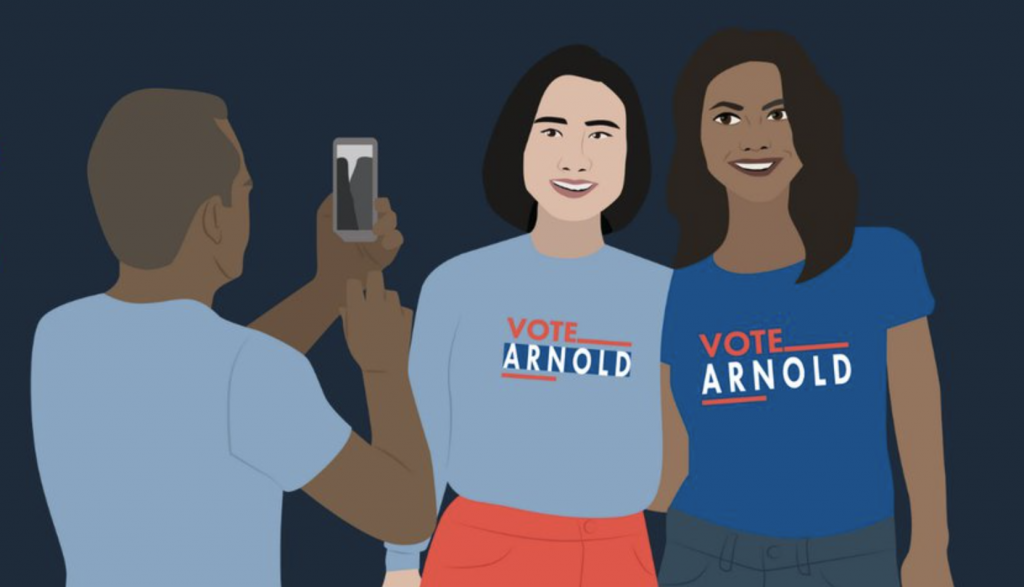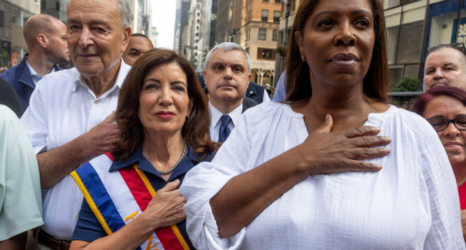When it comes to politics, deep blue New York and solid red Arkansas have one thing in common: They’re among the 20 states that have still never had a woman governor.

Last week, the Barbara Lee Family Foundation released Staying Power, new research that examines the challenges and advantages women face when they run as incumbents. We held focus groups and conducted a broad survey to determine how gender impacts voters’ ideas about what makes a “good” and “bad” leader, and tested messages about accomplishments from hypothetical Asian American/Pacific Islander, Black, Latina and white elected officials.
Overall, we found that women face similar challenges as incumbents running for re-election as they do as first-time candidates for office.
In 2021, after five years of rapid progress around women’s representation, Kamala Harris is the first-ever woman to serve as vice president of the United States; a record number of women are serving in Congress; and women governors and mayors have spent the past year in the spotlight in the wake of the COVID-19 crisis.
That progress matters to women across the country, according to our polling earlier this year, which found that 77 percent of women voters agreed that they like the idea of having more women in political office. So why are there currently eight women governors in the United States, compared to 42 men?
We know from previous BLFF research that when voters imagine a governor, they picture a white male. Staying Power confirmed that even today, the default image of a governor in voters’ minds is a man. There is a stubborn imagination barrier when it comes to seeing women in executive office, and that often translates into bias towards women candidates. Because for hundreds of years, these positions have been exclusively dominated by white men.
There is a stubborn imagination barrier when it comes to seeing women in executive office, and that often translates into bias towards women candidates. Because for hundreds of years, these positions have been exclusively dominated by white men.
That’s why, when it comes to politics, deep blue New York and solid red Arkansas have one thing in common: they’re among the 20 states that have still never had a woman governor.
One sign of progress is that in focus groups for Staying Power, many (but not all) participants acknowledged that women and women of color are held to a different and higher standard in politics. Many voters understand that women candidates not only face twice the pressure, but double binds: they have to be firm but stay likable; take and share credit; dodge political attacks while remaining amiable.
For many years, we have repeatedly found in our BLFF research that voters assume men are qualified—they can simply release their resume and it is taken for granted. Women have to prove they’re able to get results.
Similarly, this research found that voters don’t just assume women are doing a good job in their elected office. Women have to provide evidence of their accomplishments. Voters expect specifics: about what a woman incumbent has done, what she’s doing now, and what comes next. During a campaign, women incumbents are sure to face criticism from their opponent. After being attacked, how women speak up impacts how they stack up.
This new research finds women should lead with their accomplishments, lean into their biography, and communicate with calm composure. Voters want to know what a woman governor achieved, not what she failed to achieve.
Earlier this month, Alabama Governor Kay Ivey and New Mexico Governor Michelle Lujan Grisham announced they are running for re-election. As we start to see more women governors and women mayors announce their next campaigns, we will be watching to see how they navigate the different and higher standards they are held to on the campaign trail.
Up next:





